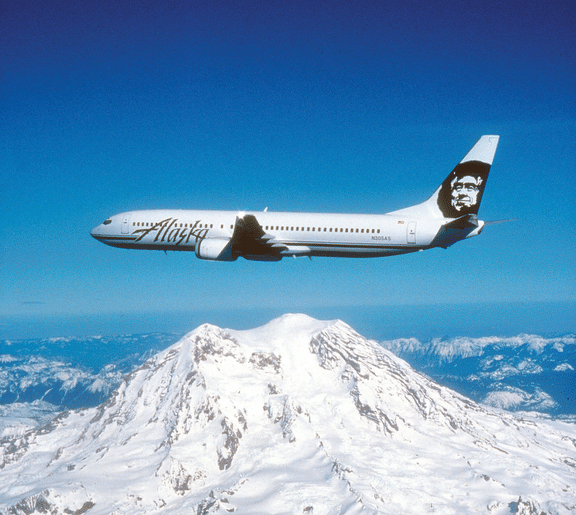[Avionics Today 10-26-2015] Alaska Airlines posted record profits again this quarter with $277 million in net income, a 39 percent increase over the third quarter 2014. The record profits follow consistently noteworthy numbers throughout the year as low fuel prices buoy profits for airlines.
 |
| Alaska Airlines is investing in its fleet. Photo: Wikipedia |
“Our results reflect a significant decline in economic fuel costs. Our price per gallon was down 42 percent to $1.82, the lowest price yet this year,” said Brandon Pedersen, executive vice president of finance and CFO at Alaska Airlines, during the company’s third quarter conference call on Friday. “Fuel prices are low — but they won’t be low forever — and this remains an important source of competitive advantage for us.”
Alaska, like many airlines, doesn’t expect the low oil prices to last and is looking to re-invest short-term earnings into long-term maintenance and fleet improvements.
“During the first nine months of the year we generated $1.2 billion in operating cash flows, an increase of $337 million over the first nine months of last year. We have invested $650 million into the business this year, most of that into our fleet. We have taken delivery of eight Boeing 737-900 [Extended Range] ER so far this year and have three more scheduled in the fourth quarter,” said Pedersen.
Alaska Airlines operates a commercial fleet of 144 Boeing 737s, with an average age of 9.6 years, according to the carrier’s website. The airline took delivery of 10 737-900ERs in 2014 and also has firm commitments for an additional 71 737 aircraft with options to acquire up to 46 additional.
“Next year is a particularly busy year for our fleet and maintenance teams with 19 new deliveries, 14 lease returns and the start of our initiative to modify three 737-700s into freighters. By the end of 2017 we will welcome 34 more 737-900ERs and our first MAX by about … one per month on average,” said Pedersen. “However, most of these deliveries support our plan to retire the 737-400 fleet in that period. And so our mainline fleet should only grow by about nine units from where it is today.”
The company expects to have 147 aircraft in its mainline fleet by the end of 2015, a number that will jump to 153 aircraft by the end of 2017, according to Alaska Airlines’ website.
As the airline retires its 737 classic fleet and replaces the aging aircraft with newer, sleeker and more fuel-efficient models, it stands to save on maintenance and fuel costs going forward.
“Our fuel efficiency continues to improve. Year to date, the mainline fleet is 2.9 percent more efficient than last year on an [Available Seat Miles] ASM per gallon basis. This will just continue to get better as we retire our 737-400 fleet over the next two years,” said Pedersen.
While fuel prices and fuel-efficient aircraft promise to save dollars, Alaska Airlines is looking to reinvest the savings into an overhaul of its aging Next Generation (NG) fleet.
“What I would say is that, to the extent that 400s are exiting the fleet, that’s a benefit to maintenance [Cost per ASM] CASM. But we are getting to a point where some of those initial NGs are getting to their first big overhaul and that is something that we are thinking about as we move into 2016 and certainly into 2017,” said Pederson.
“We have our classics and they will be going away but our NGs are reaching 13 to 15 years old. We have got brand-new ones and ones that are 15 years old. So we manage those NGs with costs, larger heavy maintenance costs and getting into the first major overhaul on engines,” said Ben Minicucci, COO and executive vice president of operations at Alaska Airlines. “So you will see an uptick in maintenance cost on our older NGs, but with the younger airplanes, the NGs, when they are new they have just a terrific cost profile for the first 10 or so years.”